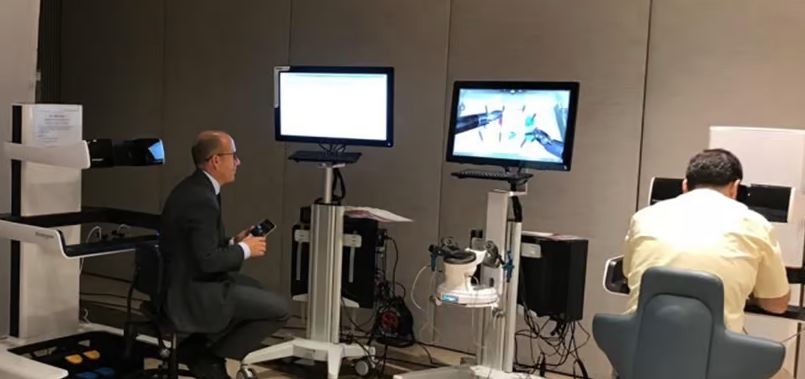下载PDF
University of Groningen Ensures Continuity for Critical Applications Using F5 Solutions
技术
- 应用基础设施与中间件 - API 集成与管理
适用行业
- 教育
适用功能
- 商业运营
用例
- 基础设施检查
- 远程资产管理
服务
- 系统集成
挑战
The University of Groningen was facing issues with its IT infrastructure, which was causing downtime for users and inefficient utilization of server capacity. The workload on the university’s servers had grown dramatically as the number of people accessing the IT infrastructure increased. In addition to staff members and students, the university had opened up the network for alumni to access and use certain academic facilities. The variety of devices connecting to the infrastructure had also increased as mobile devices and laptops became more prevalent. These factors combined to further add to the server load.
关于客户
The University of Groningen (Rijksuniversiteit Groningen) is a top European research university located in the city of Groningen in the north of the Netherlands. The university has 9,000 staff members and 25,000 students active across nine faculties, divided among approximately 150 buildings. The university also maintains strong ties with many of its 60,000 registered alumni. The Donald Smits Information Technology Centre (Centrum Informatie Technologie, or CIT) is responsible for all IT-related activities for the University of Groningen, including its collaboration environment (email, class scheduling), digital learning environment, and website, as well as the various workstations across the university. CIT manages a total of 9,600 registered workstations, comprising 7,800 Windows and 1,300 Linux PCs and several hundred Apple machines.
解决方案
To prevent future continuity problems, CIT started looking for an application delivery solution and decided to implement F5 BIG‑IP Local Traffic Manager (LTM) to maintain continuous access to its authentication services. The university has had the solution in place for nearly two years. Using BIG‑IP LTM means one data center can take over the activities of the other—without causing disruption to students and staff members. More recently, the university began using BIG‑IP LTM to manage access to and availability of the university’s new collaboration service. The collaboration service, based on Sun Java Communications Suite, consists of two data centers in a redundant setup with a third site serving as a snapshot backup. The data centers are both fronted by BIG‑IP LTM. A 2‑Gbps link to all campus locations enables users to connect with the central infrastructure.
运营影响
数量效益
相关案例.

Case Study
IoT platform Enables Safety Solutions for U.S. School Districts
Designed to alert drivers when schoolchildren are present, especially in low-visibility conditions, school-zone flasher signals are typically updated manually at each school. The switching is based on the school calendar and manually changed when an unexpected early dismissal occurs, as in the case of a weather-event altering the normal schedule. The process to reprogram the flashers requires a significant effort by school district personnel to implement due to the large number of warning flashers installed across an entire school district.

Case Study
Revolutionizing Medical Training in India: GSL Smart Lab and the LAP Mentor
The GSL SMART Lab, a collective effort of the GSL College of Medicine and the GSL College of Nursing and Health Science, was facing a challenge in providing superior training to healthcare professionals. As clinical medicine was becoming more focused on patient safety and quality of care, the need for medical simulation to bridge the educational gap between the classroom and the clinical environment was becoming increasingly apparent. Dr. Sandeep Ganni, the director of the GSL SMART Lab, envisioned a world-class surgical and medical training center where physicians and healthcare professionals could learn skills through simulation training. He was looking for different simulators for different specialties to provide both basic and advanced simulation training. For laparoscopic surgery, he was interested in a high fidelity simulator that could provide basic surgical and suturing skills training for international accreditation as well as specific hands-on training in complex laparoscopic procedures for practicing physicians in India.

Case Study
Implementing Robotic Surgery Training Simulator for Enhanced Surgical Proficiency
Fundacio Puigvert, a leading European medical center specializing in Urology, Nephrology, and Andrology, faced a significant challenge in training its surgical residents. The institution recognized the need for a more standardized and comprehensive training curriculum, particularly in the area of robotic surgery. The challenge was underscored by two independent studies showing that less than 5% of residents in Italian and German residency programs could perform major or complex procedures by the end of their residency. The institution sought to establish a virtual reality simulation lab that would include endourological, laparoscopic, and robotic platforms. However, they needed a simulator that could replicate both the hardware and software of the robotic Da Vinci console used in the operating room, without being connected to the actual physical console. They also required a system that could provide both basic and advanced simulation training, and a metrics system to assess the proficiency of the trainees before they performed surgical procedures in the operating theater.

Case Study
Edinburgh Napier University streamlines long-distance learning with Cisco WebEX
• Geographically dispersed campus made in-person meetings costly and inconvenient.• Distance-learning programs in Malaysia, India, and China required dependable, user-friendly online tools to maximize interaction in collaborative workspaces.• Virtual learning environment required a separate sign-in process, resulting in a significant administrative burden for IT staff and limited adoption of collaboration technology.

Case Study
8x increased productivity with VKS
Before VKS, a teacher would spend a lot of time showing a group of 22 students how to build a set of stairs within a semester of 120 hours. Along with not leaving the teacher much time to provide one-on-one support for each student to properly learn carpentry, it also left a considerable amount of room for error. Key information would be misinterpreted or lost as the class was taught in the typical show-and-tell way.

Case Study
Scalable IoT Empowering GreenFlex's Sustainable Growth
GreenFlex, a company that supports sustainable development, decarbonization, and energy efficiency, faced several challenges in its quest to expand its business. The company needed to deploy a robust and sustainable IoT technology to support its growth. It was crucial for them to monitor and control devices at customer sites in a safe and reliable manner. They also needed to integrate devices across a range of communication protocols and gather and act on data to meet efficiency targets. GreenFlex had previously built IoT capabilities into its digital platform, GreenFlexIQ, to monitor and manage customer sites remotely. However, they soon realized that they needed a new platform to support their ambitions. They needed a platform that could scale to connect more devices for production management and make it easier for the operations team to manage devices in the field.





